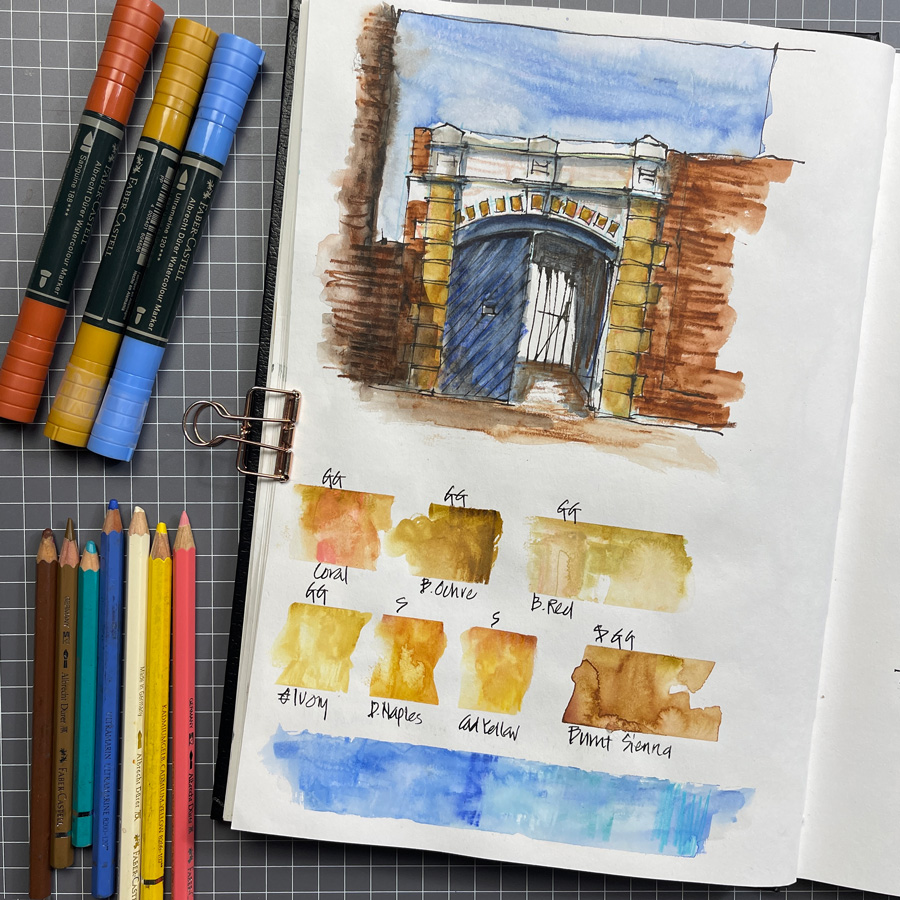
When I start using new sketching tools I typically alternate between urban sketching and explorations at home. When I’m sketching on location I normally just make a snap decision and start adding colour so the results are not always 100% successful. So I always try to follow up when I’m back home with some mixing swatches. These explorations help me find a solution but it’s important to go back outside soon afterwards and try again. So it’s a constant feedback loop!
When sketching at home (as per the above picture) I often do swatches mid-sketch – after the line drawing is done and before starting to add colour.
Here are some of my recent mixing explorations and a few thoughts about each.
Colour chart of the full AD Watercolour Marker range. The top stroke in each swatch is the full marker at full strength without any water added.
These swatches were done after my first marker sketch at Lane Cove National Park (see the original in this article).
They directly relate to the different layers in my typical bush scene:
- The high-level leaves of the foreground or middle ground trees,
- the background bush (forest),
- the middle ground shrubs and low trees
- and the grass.
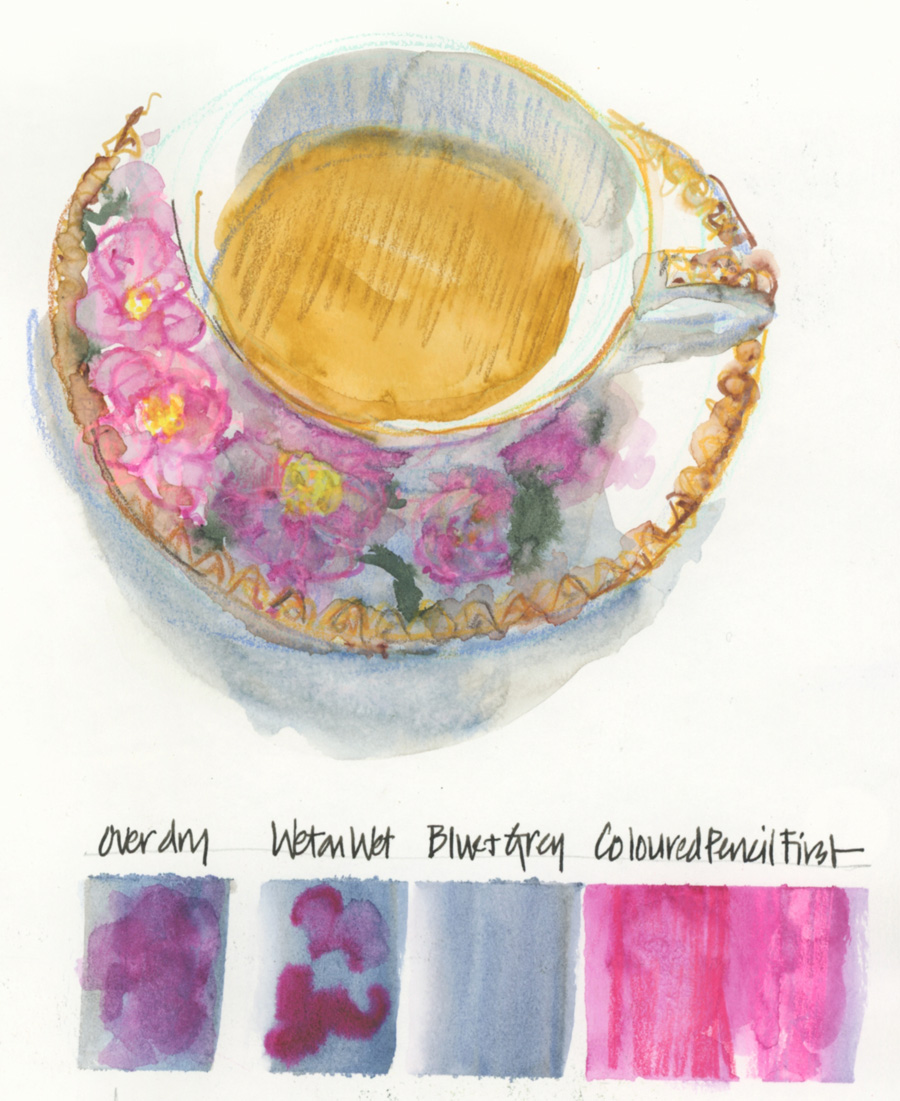
Swatches after doing a teacup sketch to explore shadow greys and to see if I can use these markers wet on wet.
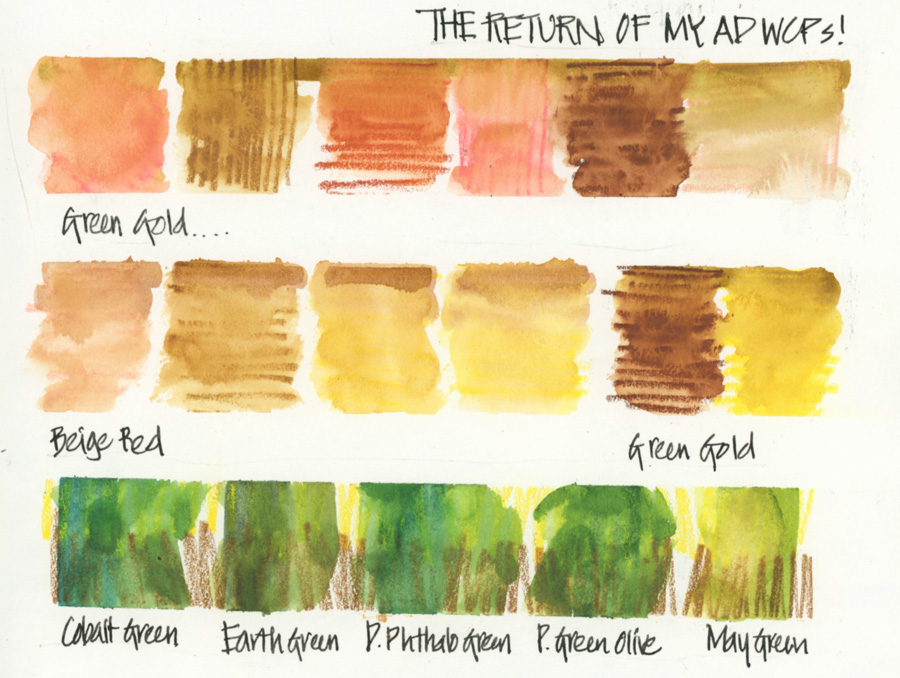
A few days later I started thinking about using watercolour pencils instead of coloured pencils and exploring ways of adjusting Green Gold marker so it’s more of a yellow ochre colour (less green). I also tested the different green markers in the set.
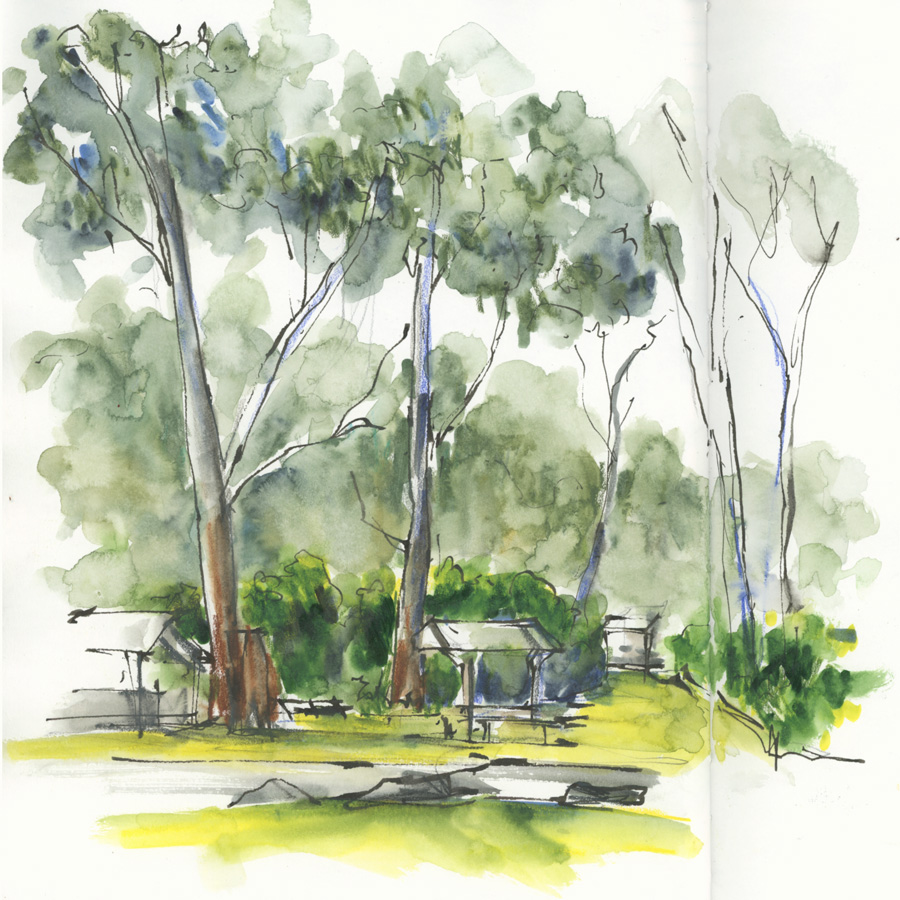
And then the next day I tested these ideas at Lane Cove National Park. Some of the greens were a little too bright so…
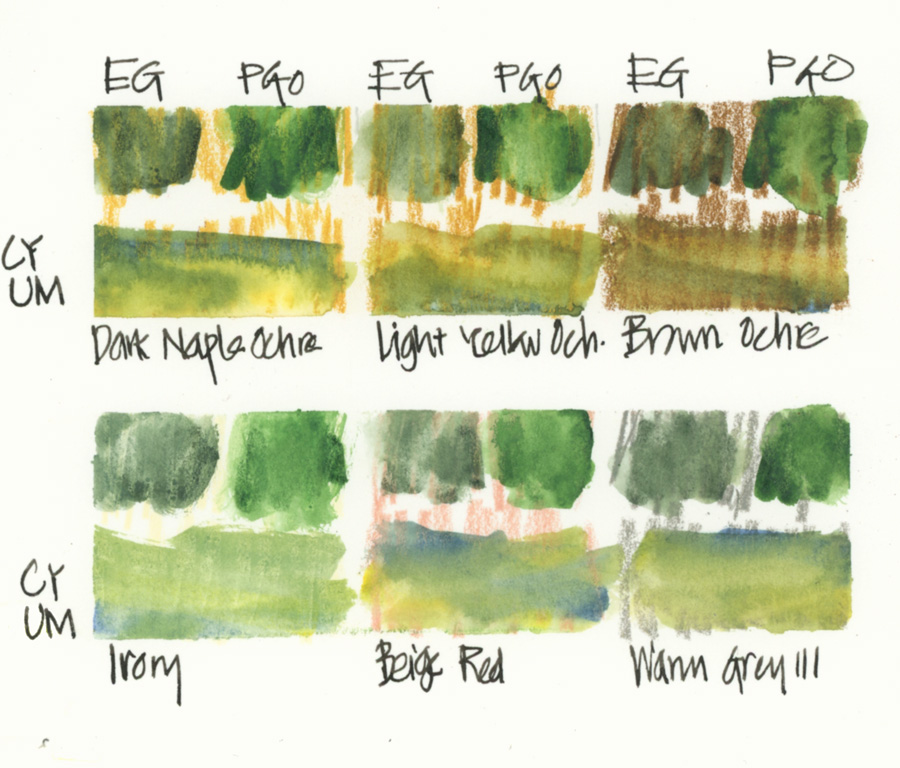
I did these swatches to explore options for making them more ‘Australian’.
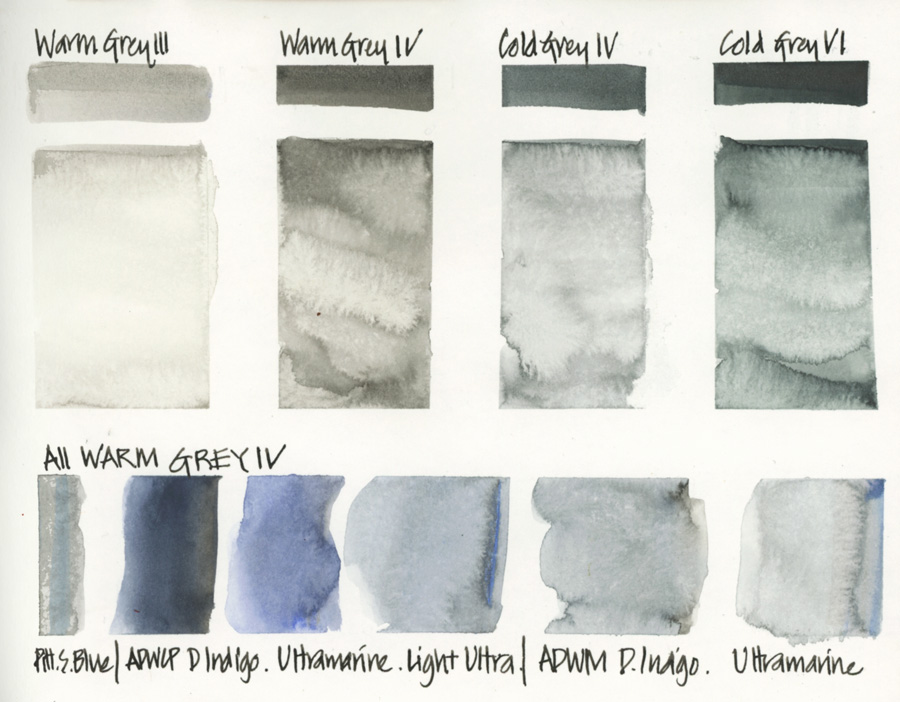
And the last set of swatches was done in order to choose the best two or the four grey markers in the range. In the end, the two warm greys won as it’s very easy to adjust them to a cold grey by simply adding a little blue.
I hope that you have found this article helpful and that it gives you some ideas on how to get to know your materials better.

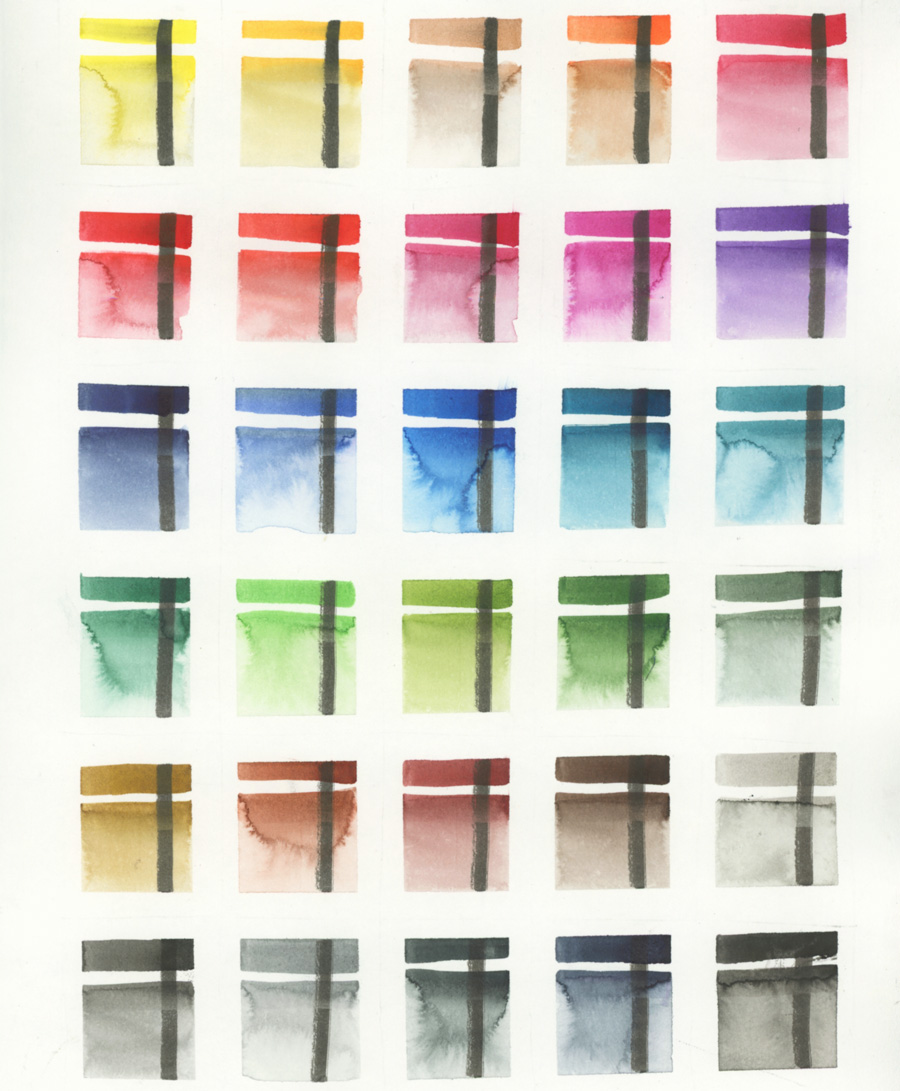
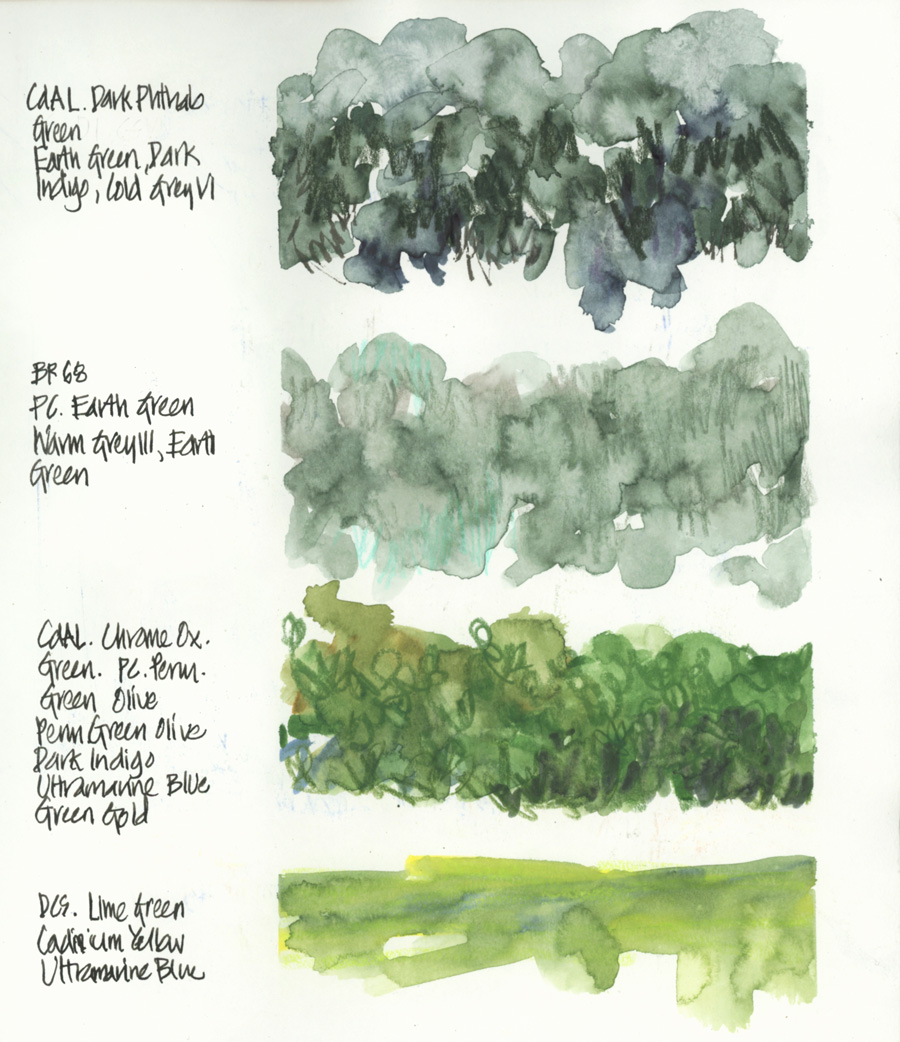



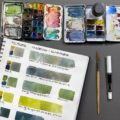
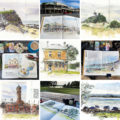
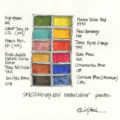
NEWSLETTER
Subscribe for first notification of workshop + online classes and more.